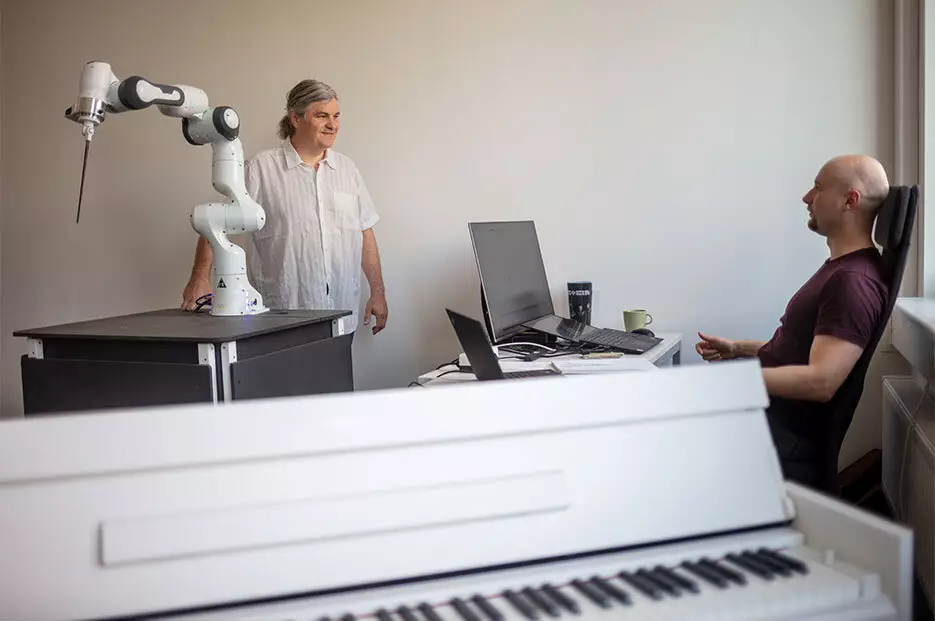In an awe-inspiring melding of technology and artistry, a remarkable three-armed robot has made its inaugural performance in Dresden, Germany, taking the role of an orchestra conductor. This innovative machine, designed with batons that evoke the iconic light sabers of the “Star Wars” saga, led the prestigious Dresdner Sinfoniker orchestra in two groundbreaking concerts. The music performed was specially composed to showcase the unique capabilities of this robotic conductor, marking a significant step forward in the intersection of robotics and music.
The robotic conductor is not merely a mechanical arm; it embodies a sophisticated understanding of musical timing and dynamics, capable of leading different sections of the orchestra with unprecedented independence. During the premiere of “Semiconductor’s Masterpiece,” a work by Andreas Gundlach, the intricate choreography of the robot’s three arms allowed it to simultaneously guide strings, woodwinds, and brass, something that a single human conductor might not achieve with the same level of precision. The performance demonstrated that this artificial entity could respond to the orchestra’s needs with an impressive degree of nuance.
The inception of this robotic conductor is rooted in a collaborative project with scientists from Dresden’s Technical University. Their insights into ‘cobots’—robots designed to work alongside humans rather than replace them—formed the foundation for this artistic endeavor. Over the course of two years, engineers and musicians engaged in an intricate process of training and programming the robot, aiming to foster a connection between the technology and the musicality it was created to interpret.
Andreas Gundlach eloquently expressed the challenges faced during the development phase, emphasizing that the complexities of human conductorial movements revealed the extraordinary nuances inherent in human creativity. This endeavor was not just about programming a machine; it involved instilling the robot with the capacity to convey aesthetic expression through its arm movements. The patience required to achieve this task underscores the respect and admiration for human artistry intrinsic to the project.
During the concerts, the robot’s dual-role conducting also shone through in the premiere of “#kreuzknoten” by Wieland Reissmann, where the orchestra played various instruments at different tempos simultaneously. The ability of the robotics to coordinate such complexity highlights its potential not only as a tool but as a leader in creating diverse musical experiences. In an age where technology continuously reshapes artistic expression, this robotic conductor serves as a testament to the innovative spirit within the realm of music.
As we continue to explore the capabilities of machines in creative fields, the debut of the robotic conductor provides a glimpse into a future where technology and human creativity coexist harmoniously. Rather than inciting fears of obsolescence for human conductors, this robot exemplifies a new partnership that can enhance our experience of orchestral music. The emotional and dynamic layers that a human conductor brings cannot be replicated, but the collaboration may yield a new form of artistic expression that is yet to be discovered.

